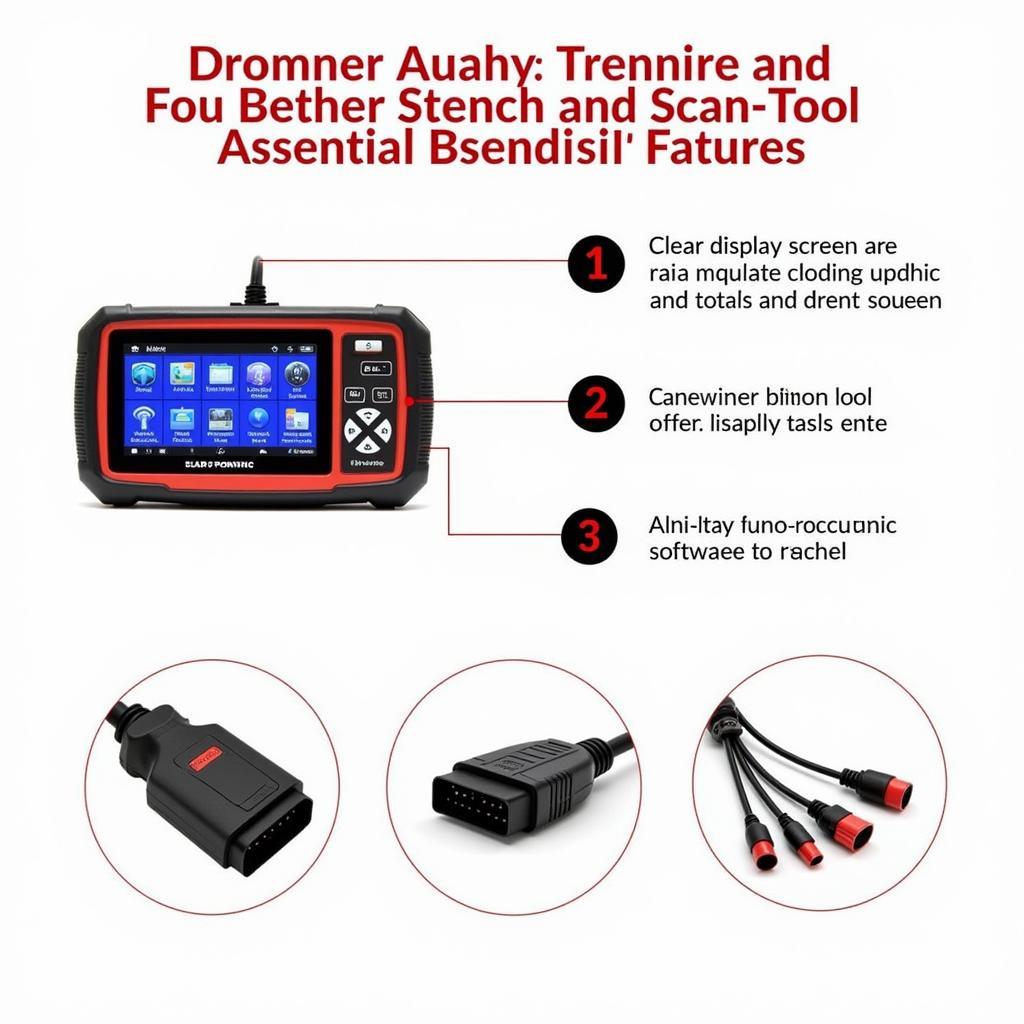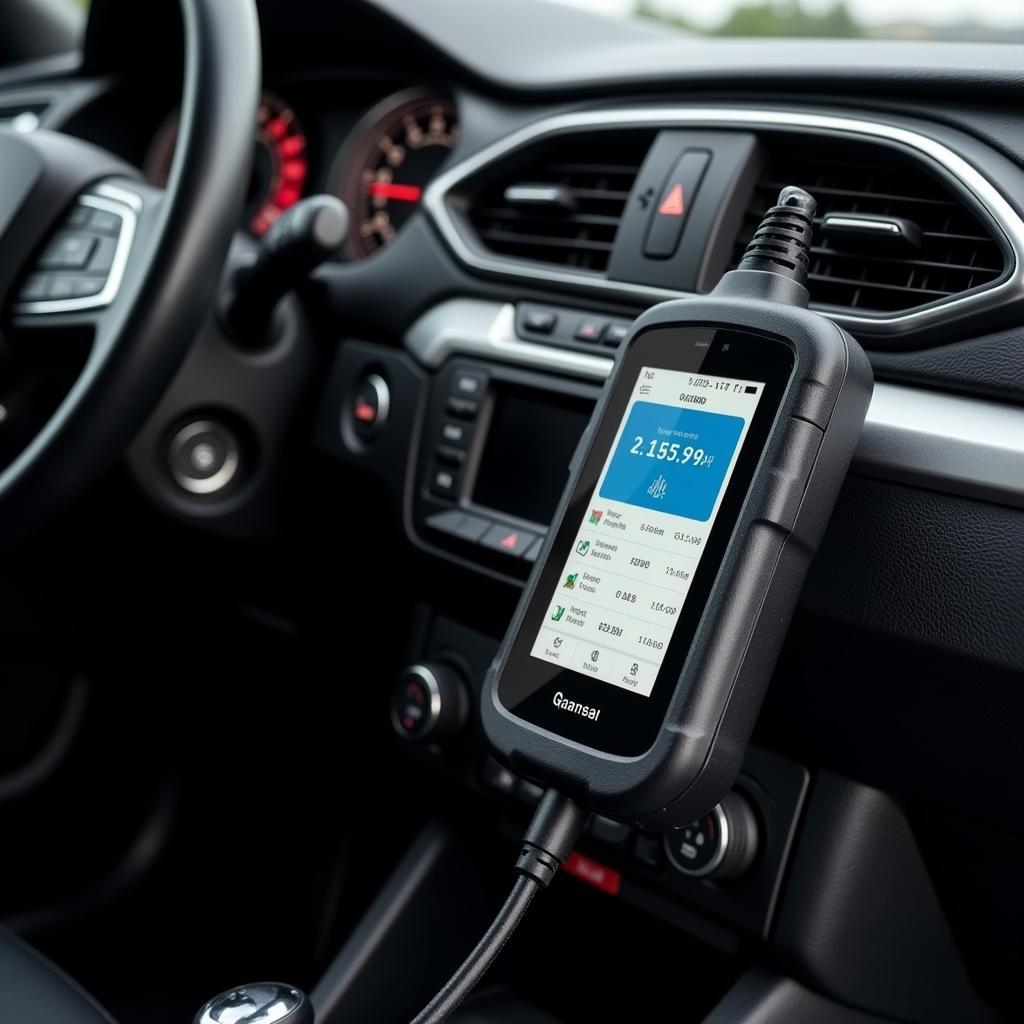Finding the best all around scan tool can be a daunting task, especially with the wide range of options available on the market. Whether you’re a seasoned mechanic or a car enthusiast looking to diagnose your own vehicle, having a reliable scan tool is crucial for understanding and resolving car problems efficiently. This guide will delve into the intricacies of choosing the right scan tool for your needs, covering everything from understanding basic functionalities to advanced features.
Why You Need a Scan Tool
Modern vehicles are equipped with complex electronic systems controlled by onboard computers, often referred to as Electronic Control Units (ECUs). These ECUs monitor various aspects of the vehicle’s performance, from engine timing to emissions control. When a problem arises, the ECU triggers a warning light on your dashboard, such as the check engine light. This is where a scan tool becomes indispensable.
A scan tool allows you to communicate with the vehicle’s ECUs, retrieve diagnostic trouble codes (DTCs), and access live data streams from various sensors. By interpreting this information, you can pinpoint the root cause of the problem and make informed repair decisions.
Key Features to Consider
Not all scan tools are created equal. To choose the best all around scan tool, consider the following features:
1. Vehicle Compatibility
The first and foremost consideration is compatibility. Ensure the scan tool you choose supports the make, model, and year of your vehicle, or the range of vehicles you intend to work on. Most modern vehicles use the OBD-II (On-Board Diagnostics II) standard, but some older models might require specific adapters or software.
2. Code Reading and Clearing
A fundamental function of any scan tool is the ability to read and clear DTCs. This allows you to identify the source of a problem and reset the warning lights after repairs.
3. Live Data Streaming
Live data streaming provides real-time information from various sensors in your vehicle. This feature is invaluable for monitoring engine parameters, transmission performance, and other critical systems, helping you identify intermittent issues and verify repair effectiveness.
4. Bi-Directional Controls
Bi-directional controls, also known as active tests, allow you to interact with the vehicle’s systems. This feature enables you to perform actions such as opening and closing valves, cycling relays, or activating components, aiding in component testing and system troubleshooting.
5. Additional Features
Beyond the core functionalities, consider additional features that can enhance your diagnostic capabilities:
- ABS and SRS Support: Advanced scan tools can access and diagnose problems within the Anti-lock Braking System (ABS) and Supplemental Restraint System (SRS), offering comprehensive coverage.
- Data Logging and Playback: This feature allows you to record live data streams, enabling you to analyze information over time or share it with other technicians.
- Wireless Connectivity: Scan tools with Bluetooth or Wi-Fi connectivity offer greater flexibility, allowing you to view data on a smartphone or tablet.
Types of Scan Tools
Scan tools come in various forms, each catering to different needs and budgets:
1. Basic Code Readers
These entry-level devices primarily focus on reading and clearing DTCs. They are a cost-effective option for basic diagnostics but lack advanced features.
2. Handheld Scan Tools
Handheld scan tools offer a wider range of features than basic code readers, including live data streaming and some bi-directional controls. They are a versatile option for both DIYers and professionals.
3. Professional-Grade Scan Tools
Professional-grade scan tools are the most comprehensive and powerful options. They provide extensive diagnostic capabilities, advanced functionalities, and often come with software updates and technical support.
Choosing the Right Scan Tool for You
“Selecting the best all around scan tool depends on your specific needs and budget,” says John Miller, a seasoned automotive engineer with over 20 years of experience. “Consider the features you require, the vehicles you work on, and your level of expertise.”
- DIY Enthusiasts: For basic diagnostics and maintenance, a handheld scan tool with code reading, clearing, and live data streaming capabilities should suffice.
- Professional Mechanics: Professional-grade scan tools with comprehensive coverage, advanced functionalities, and software updates are essential for in-depth diagnostics and complex repairs.
Conclusion
Investing in the best all around scan tool empowers you to take control of your vehicle’s maintenance and repairs. By understanding your needs, researching available options, and considering the factors discussed in this guide, you can choose a scan tool that meets your requirements and enhances your automotive diagnostic experience. For personalized assistance and expert advice, feel free to contact ScanToolUS at +1 (641) 206-8880 or visit our office at 1615 S Laramie Ave, Cicero, IL 60804, USA.



